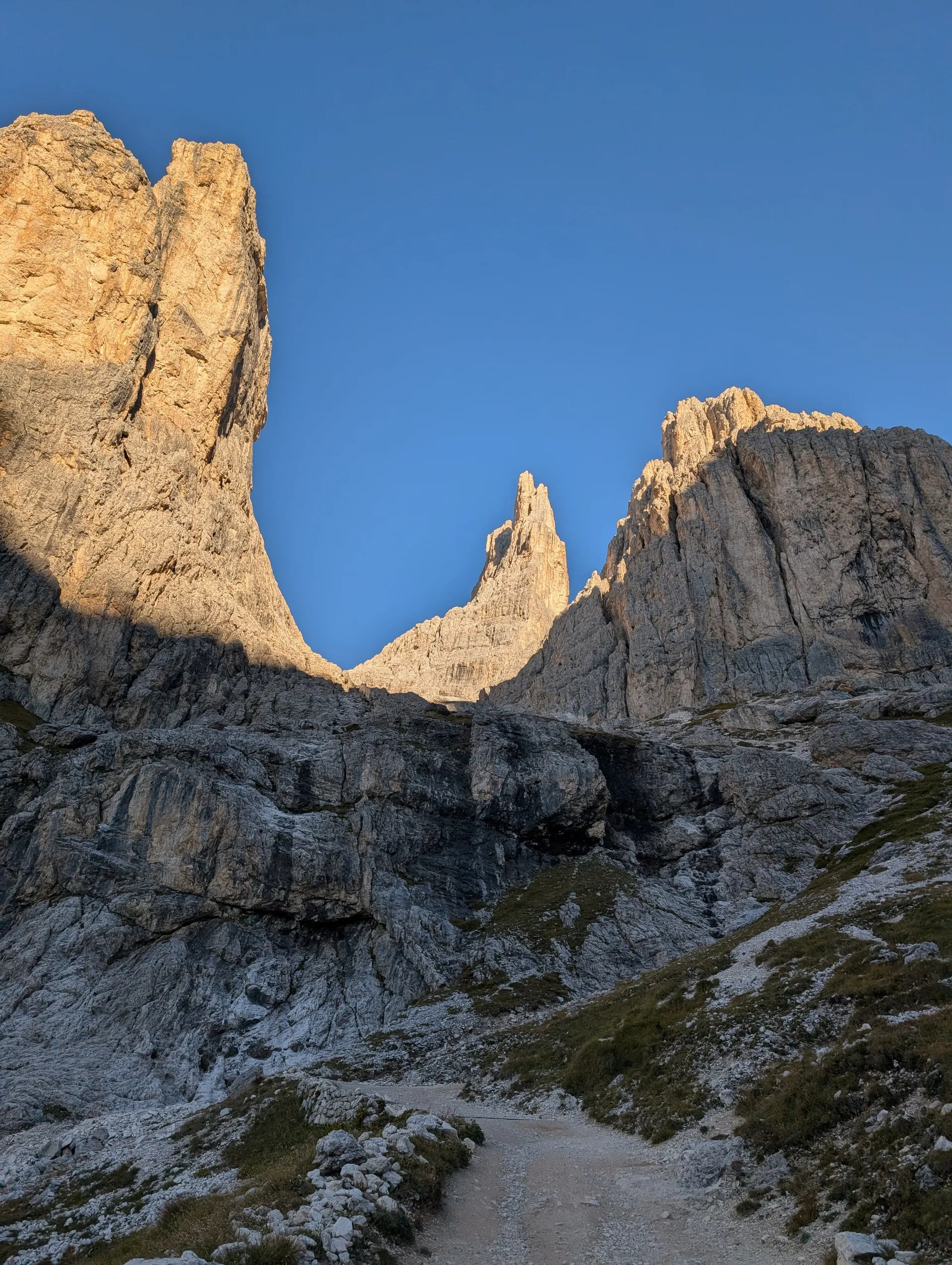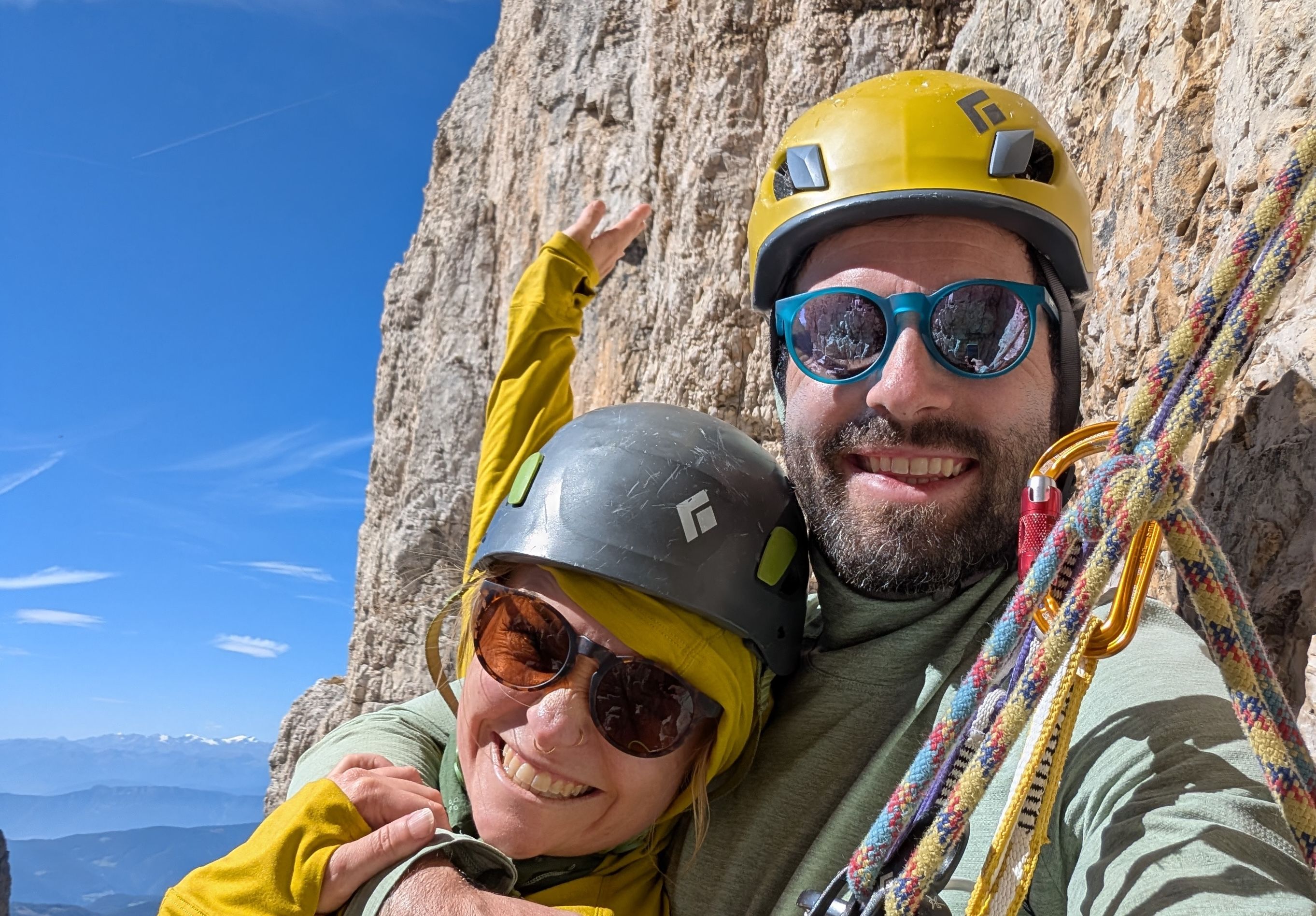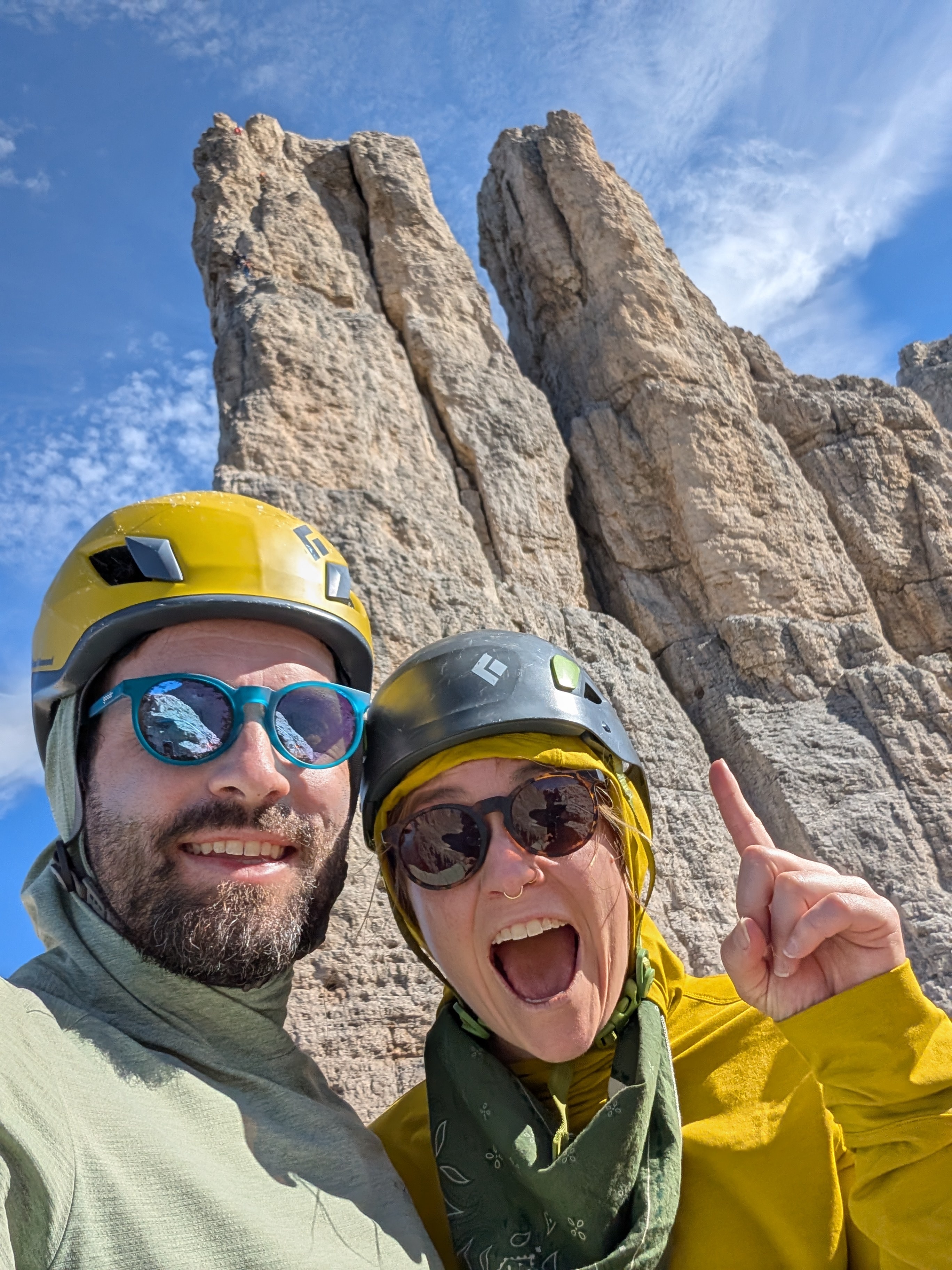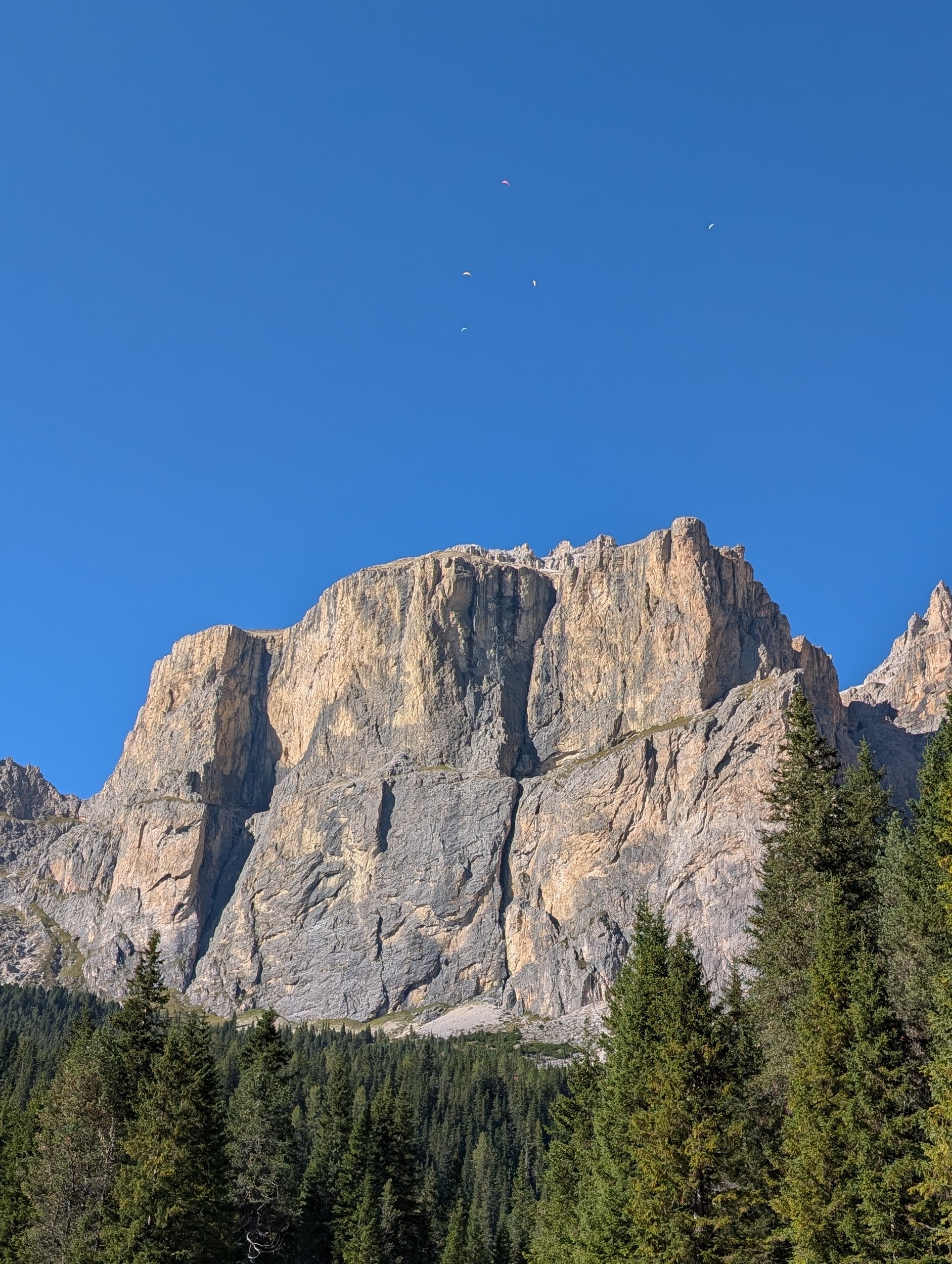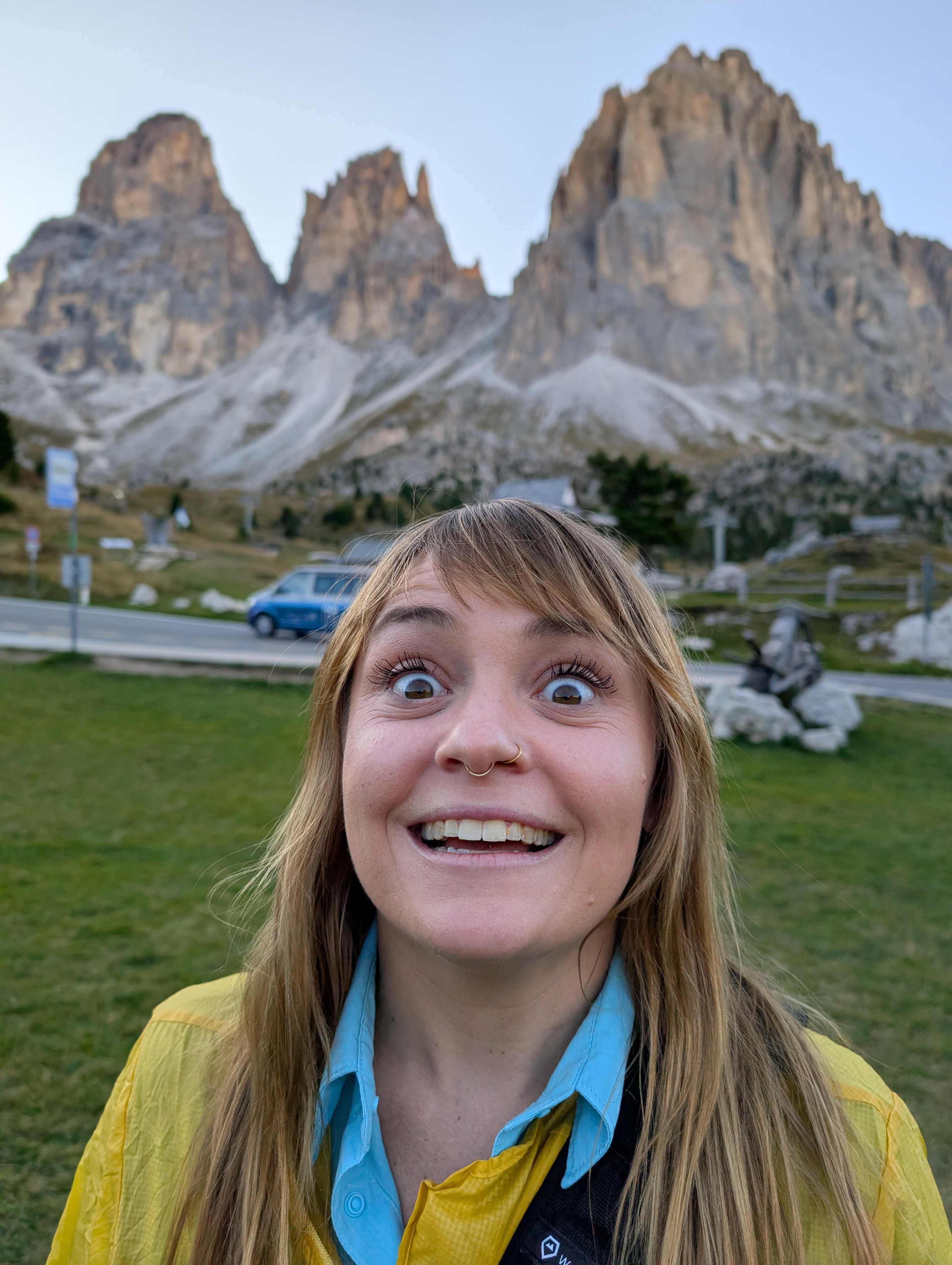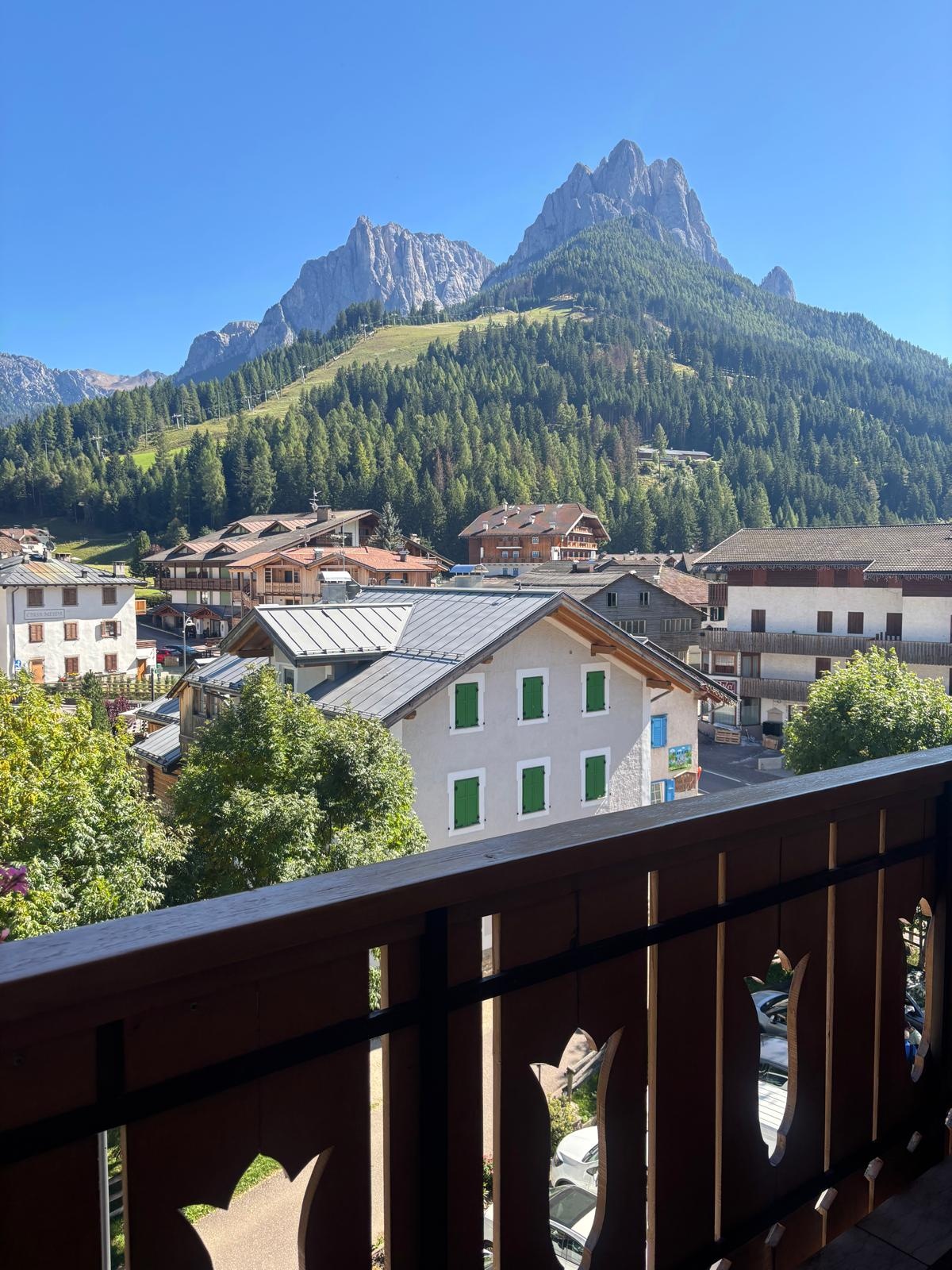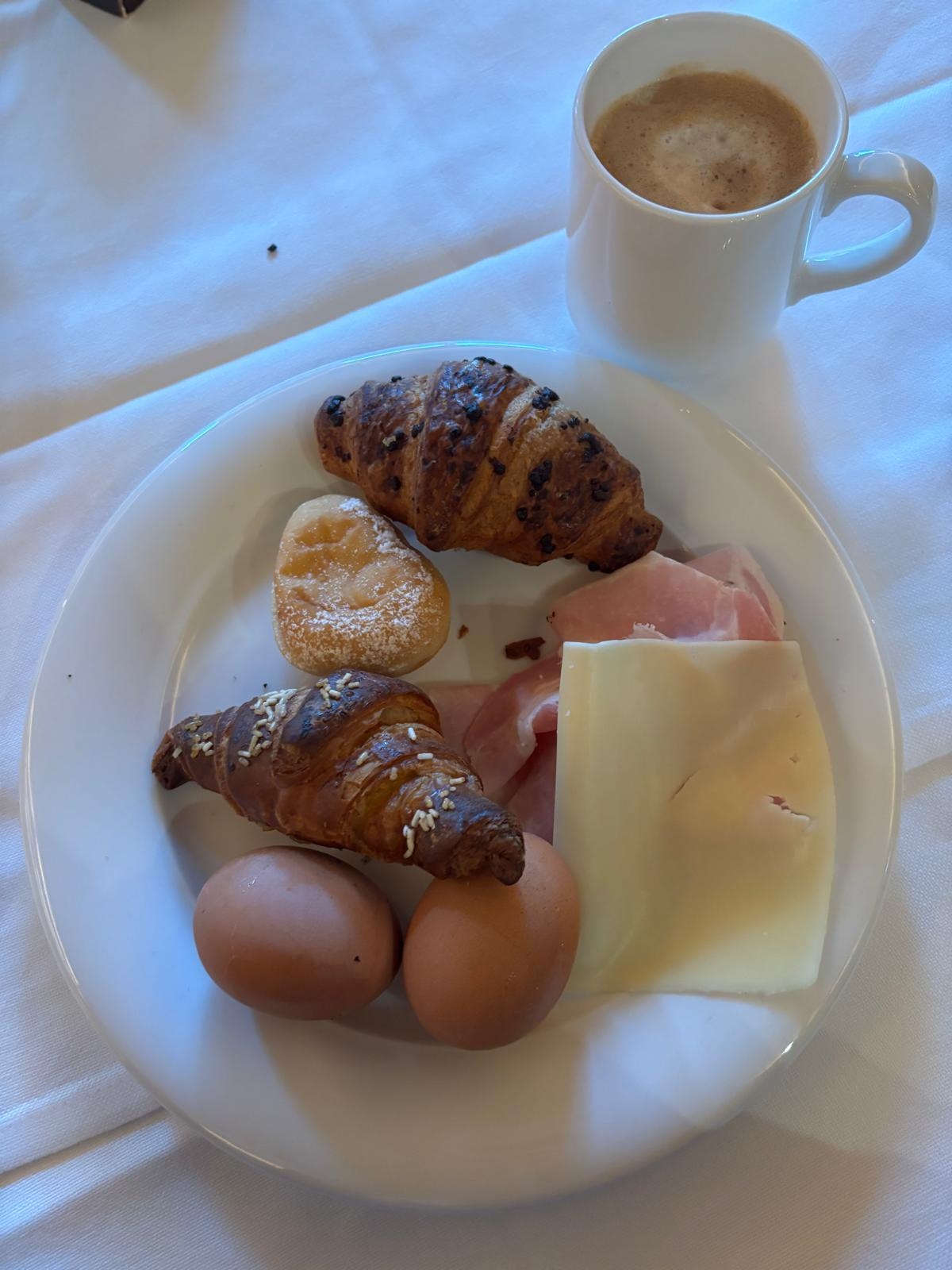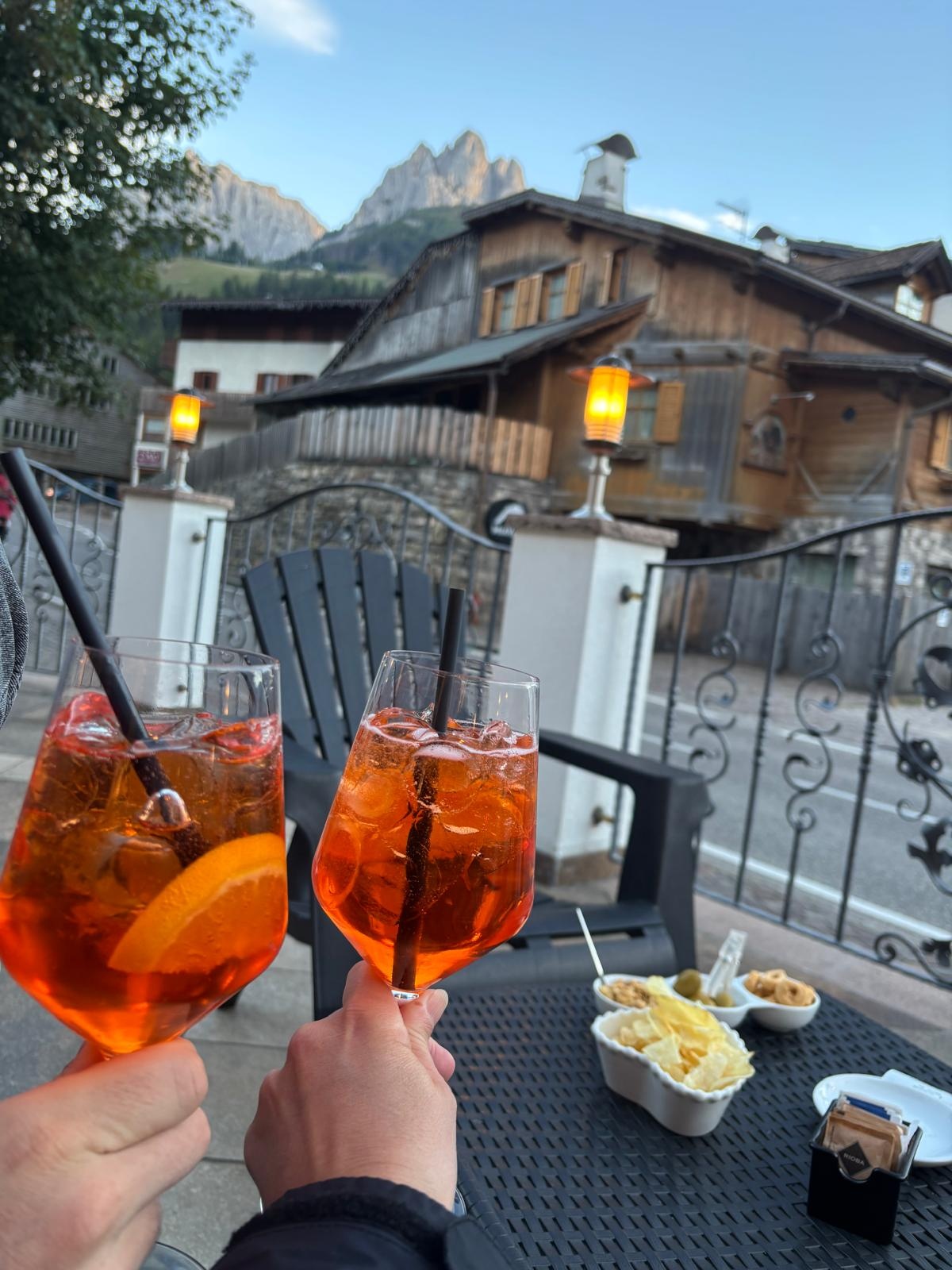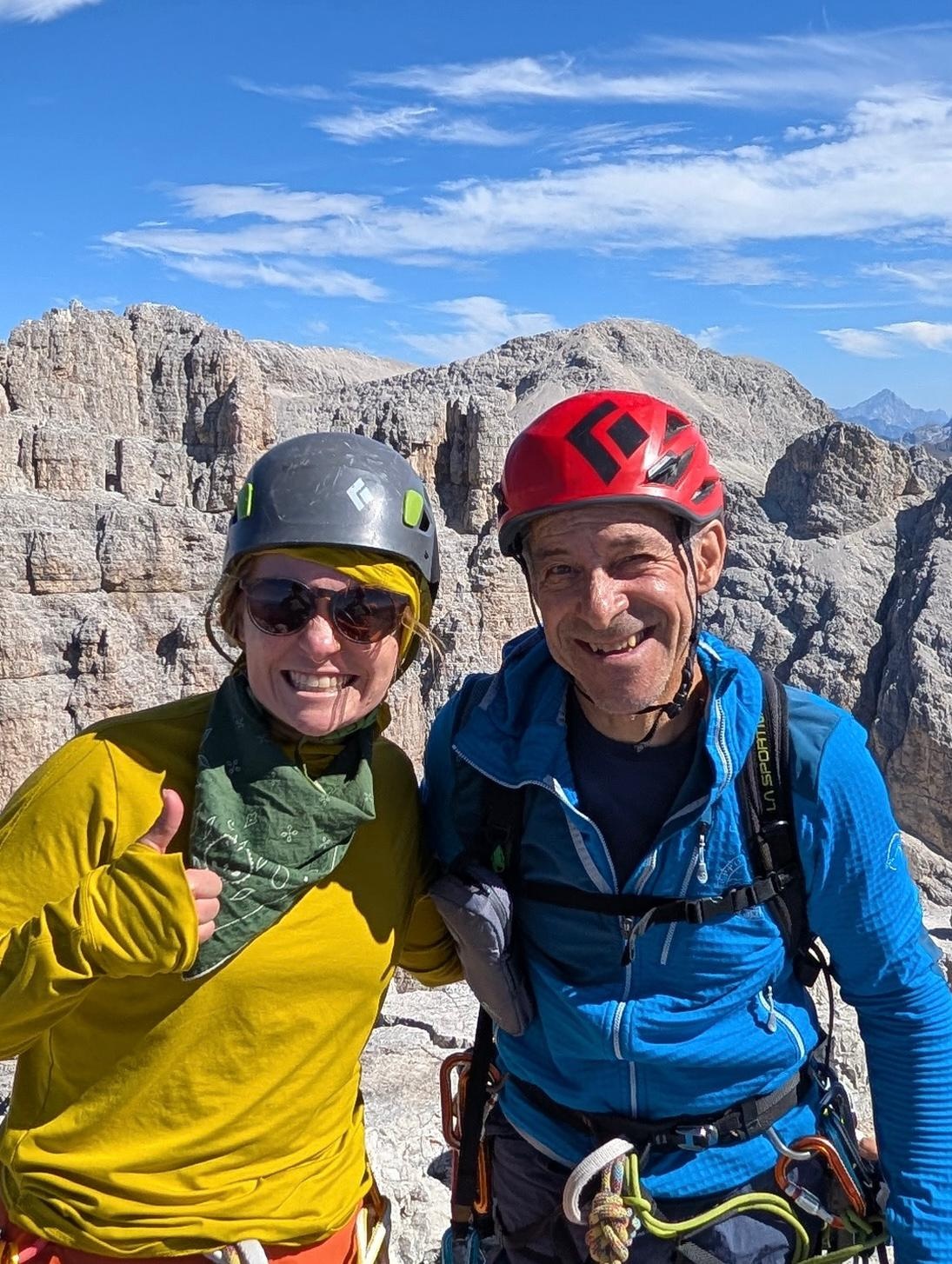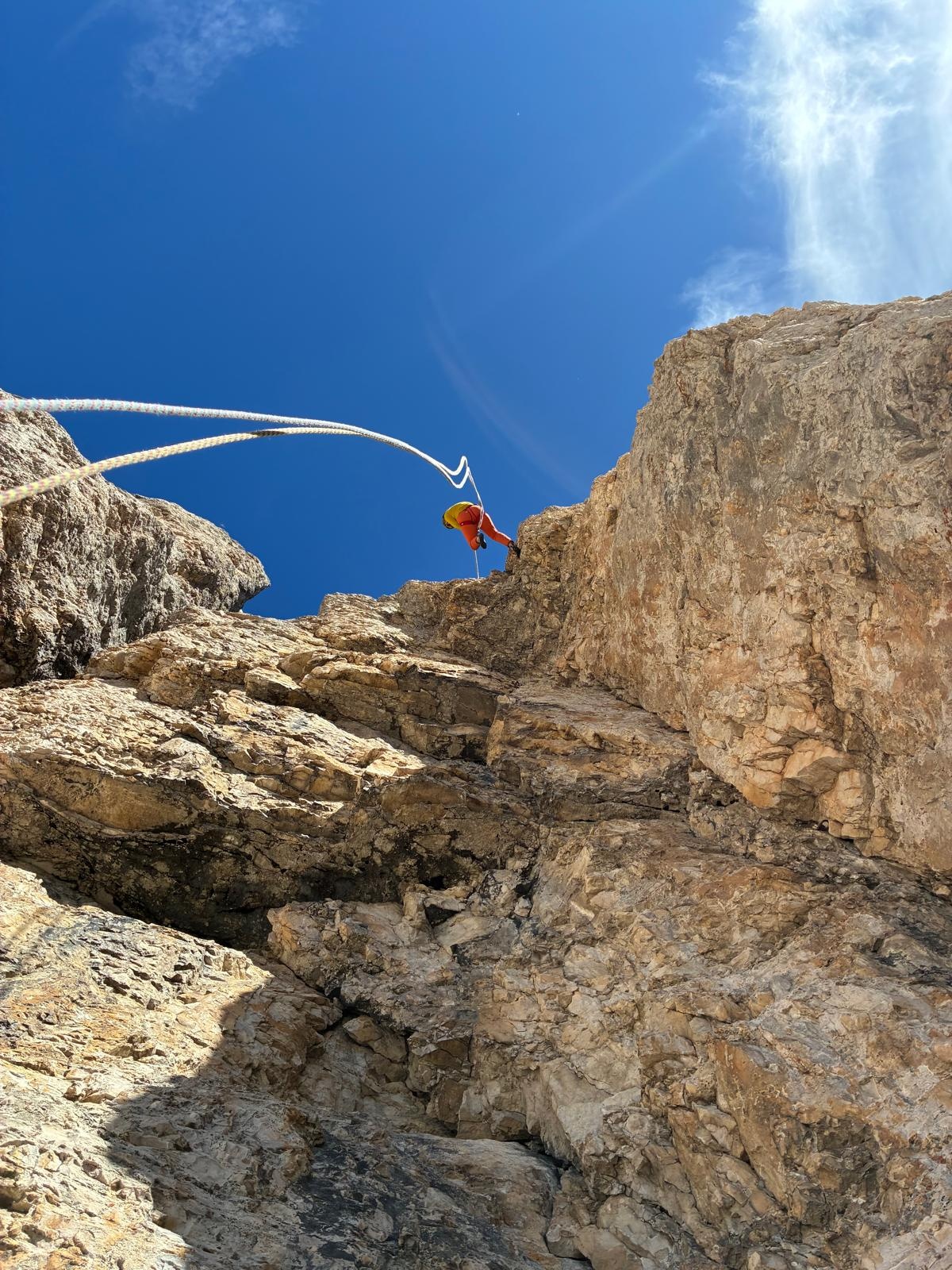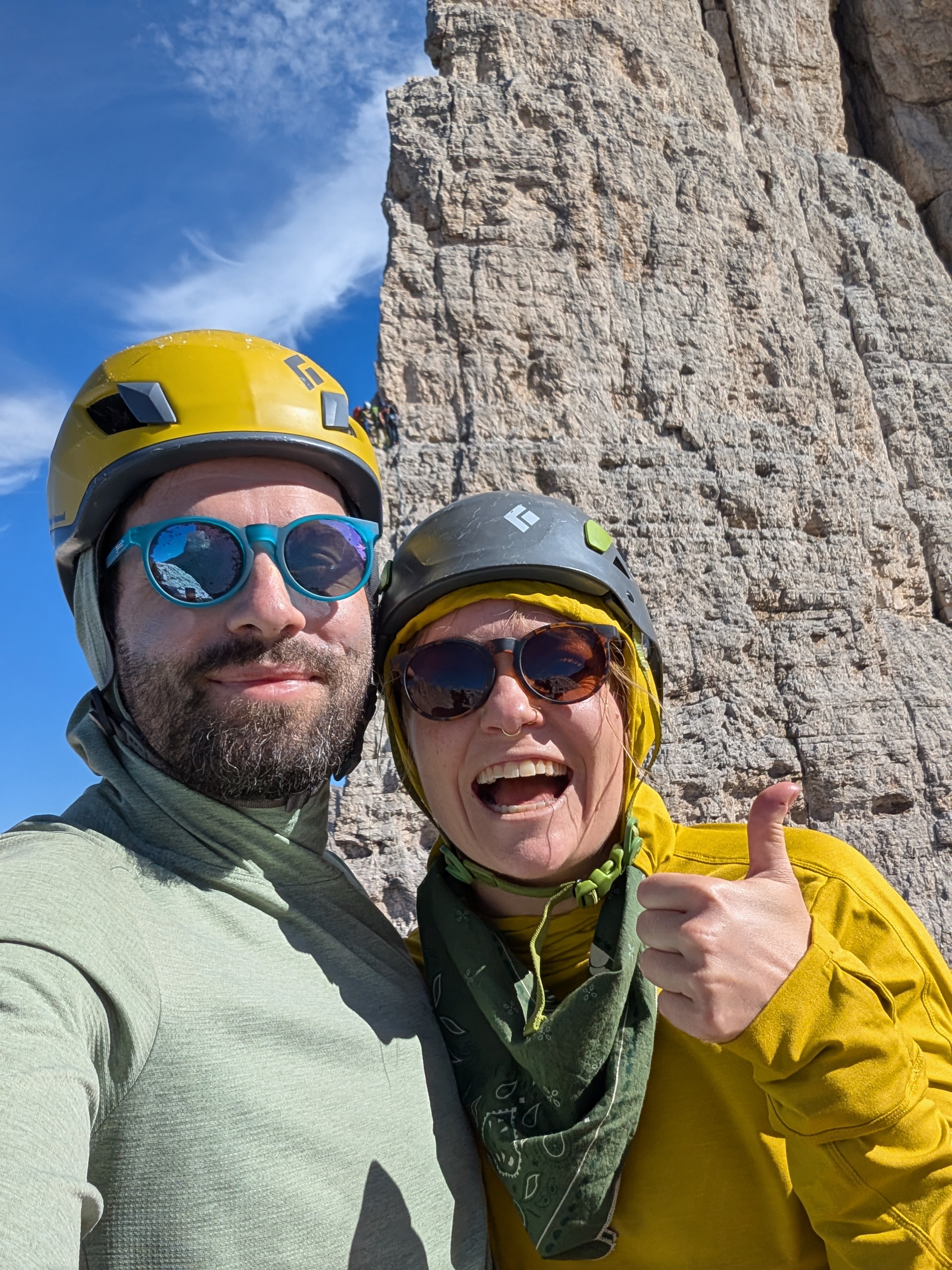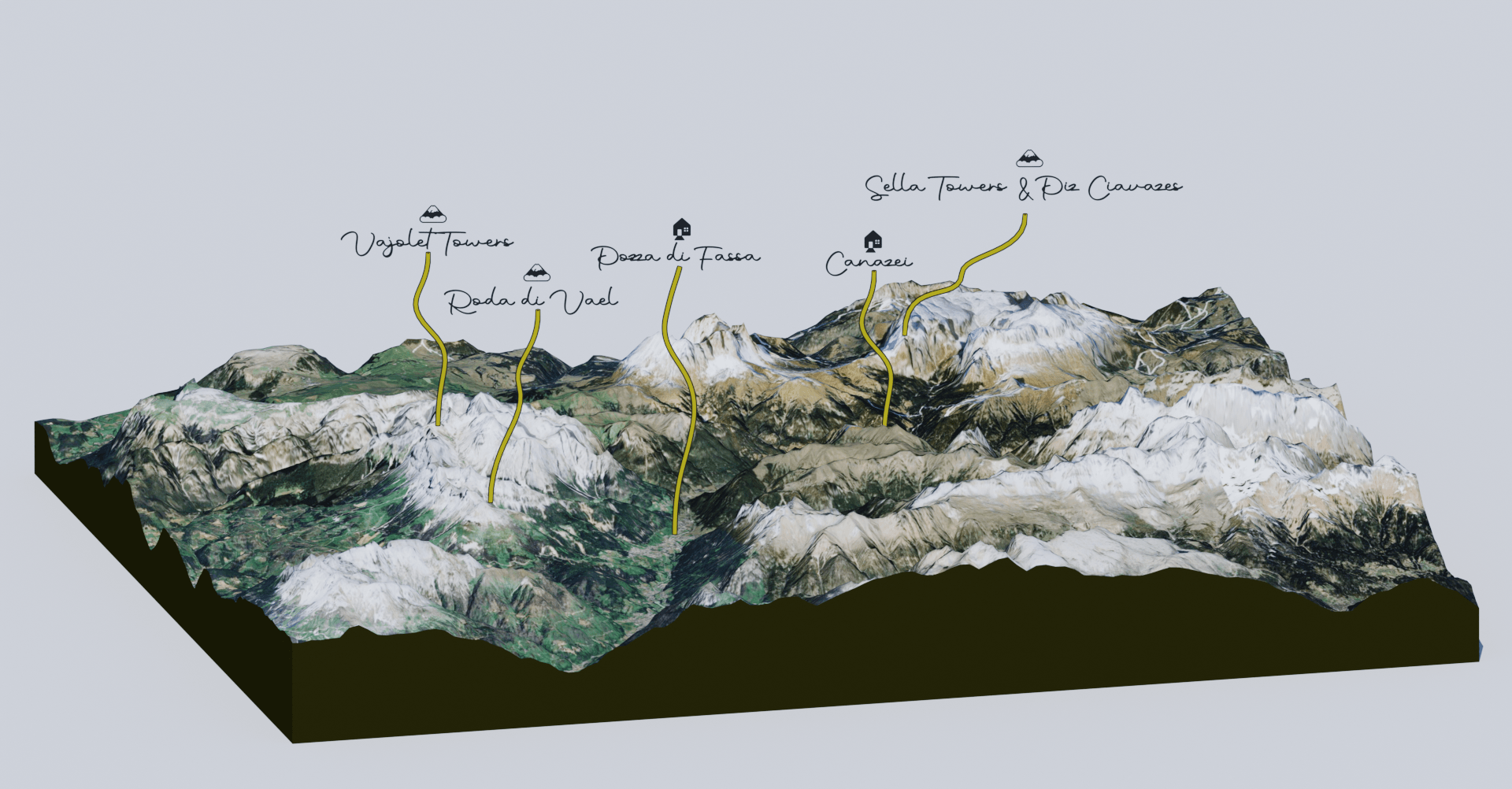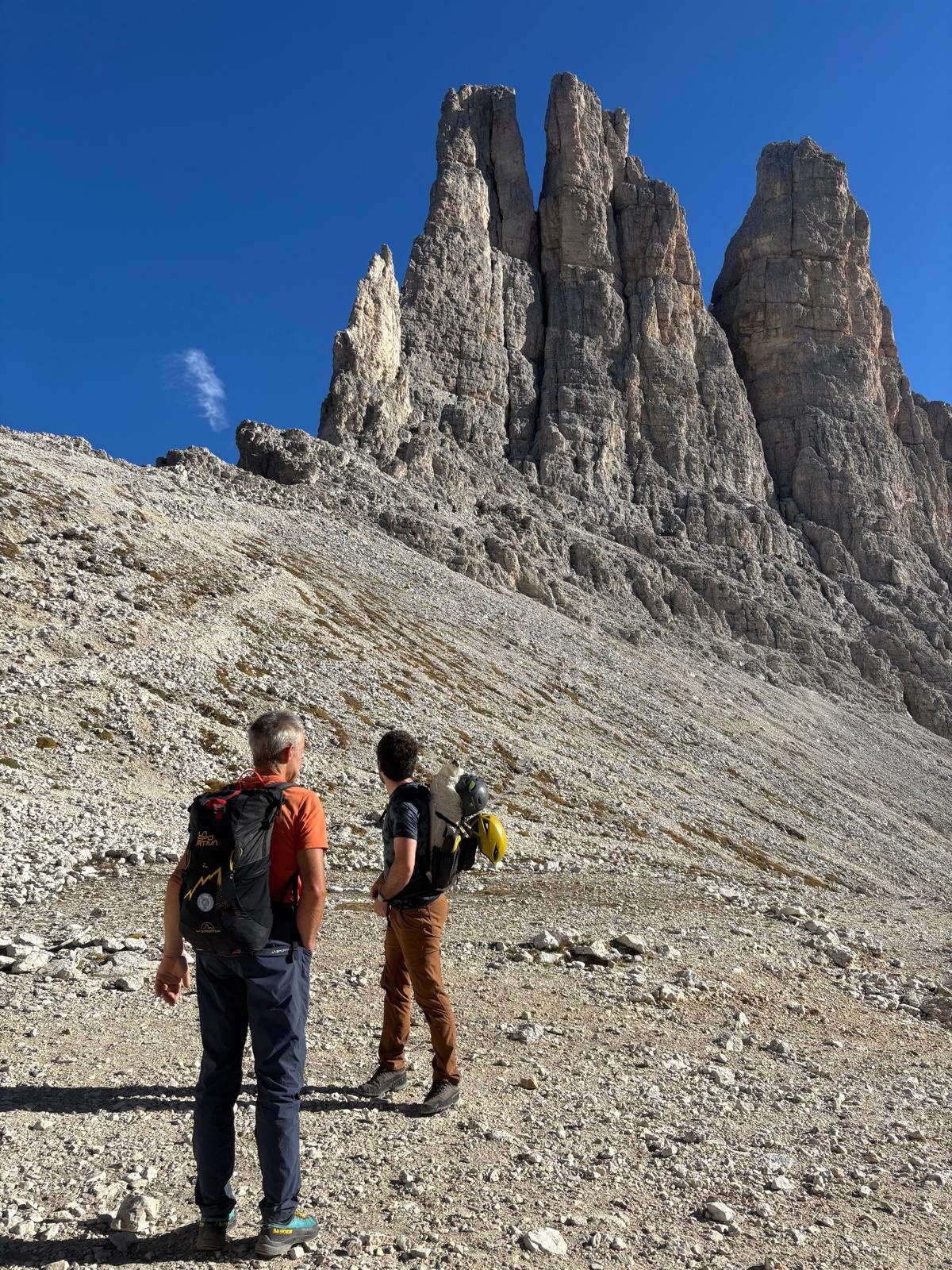We’d just arrived in Trento, and the most important day of the year was upon us—Daysi’s birthday. Far from settled in, but we decided to spend the weekend somewhere in nature, away from all the chaos. At that point, we’d dipped our toes in the Dolomites, but hadn’t really been in the thick of it. So, after some probing, I decided to plan a weekend in the heart of the mountains.
We’re both pretty proficient in the standard sport climbing and even in multi-pitch climbing, but we both agreed that before venturing out in the unknown Dolomites on our own, we should probably do an alpine climbing course. You know, just to have someone show us the ropes. 🙃
An alpine climbing course for Daysi’s birthday weekend could definitely land too deep in the type 2 fun territory, but, hoping for the best, I decided to run with it. The requirements were “I just want to be somewhere pretty” and “I’d like to see the pointies (our nickname for the Dolomites’ sharp, pointy cliffs).” Those I could definitely work with.
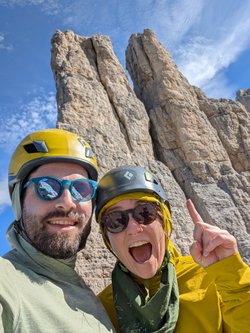
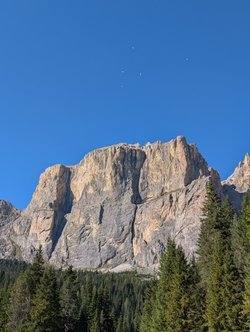

Going just for a few days, I didn’t want to travel too far. So, I started looking at areas within a two-hour driving distance. Because I had spent time in the Alps when I was younger, I had some ideas right off the bat. It didn’t take long before I had a clear winner – , an area about two hours northeast of Trento, known for some of the most iconic peaks in the Dolomites.
So far, so good. The next step was to sort out the climbing course. I only found two schools/guiding services in the area, and one of them didn’t even reply to my email. The other one is . I can’t help but recommend it; we had the best experience we could have hoped for. But more on that in a minute.
Having only one option made the decision pretty easy. I was just hoping that they weren’t going to be booked out for our dates. Fortunately — and also a bit out of character — I gave myself ample time to plan this trip, and it was still a month and a half out. On top of that, we were going at the end of September. That’s pretty much the end of the season and therefore it’s generally easier to book things. But it’s also when the mountains turn less predictable, and you might easily find yourself weathering a storm in a cozy refugio instead of scaling rock faces. Spoiler alert: the weather was perfect all three days.
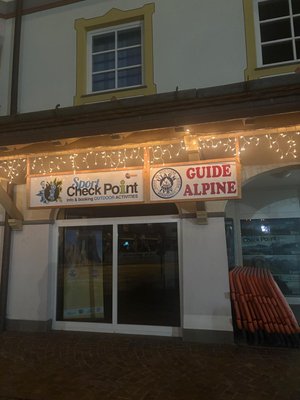
The school is based in Pozza di Fassa, a small town in the Fassa Valley, so that’s where I decided to look for a place to stay. You typically want to start your hikes in the mountains pretty early in the morning, especially late in the season, to avoid the afternoon storms. So it’s good to cut the morning travel as much as possible if you can. Normally we would probably camp or car camp, but since it was Daysi’s 30th birthday, I decided to go a little fancier, and we ended up in . The room was nice and the staff was great. They even gave us a top-floor room with a view of the mountains when I mentioned the birthday occasion. We paid a very reasonable €65 + €2 (city tax) per person per night, including breakfast. The only thing I forgot to check was whether the breakfast time lined up with our schedule. It didn’t. It only started at 7:30, which was unfortunately a bit later than what I’d hoped for.
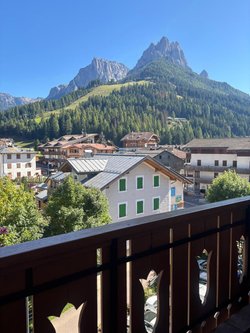


There’s still a lot happening in Pozza. Even late in the season, plenty of spots for food and drinks stay open. The few places we went to are:
- — A laid-back bar with a great selection of panini. Perfect for a quick dinner when you’re barely staying awake after a long day in the mountains.
- — Pozza’s fine-dining gem with a modern yet cozy atmosphere. We wouldn’t normally end up somewhere this elegant on a climbing trip, but this was a surprise treat from Daysi’s brother (a true foodie). We went with the tasting menu and wine pairing — absolutely worth it. If you’re looking to splurge a little, El Filò won’t disappoint. Just be sure to make a reservation.
- — A solid pizza spot, but definitely book ahead. We didn’t, and ended up outside. The service on the patio was slow, and it got pretty chilly — not the coziest setup.
I managed to hurt my wrist on day one of climbing, but fortunately, there is a in Pozza, and they speak English there!
There are also a few places on our list we unfortunately didn’t have time to checkout but we think they would be worth visiting. Namely:
- — A farm-to-table spot with a modern mountain vibe. It’s perched on the hillside just above Pozza and looked like exactly the kind of place we’d love.
- — A thermal spa located on the south side of Pozza. Nothing beats a good soak after a long day in the mountains — even our alpine guide swore by it as the perfect way to unwind.
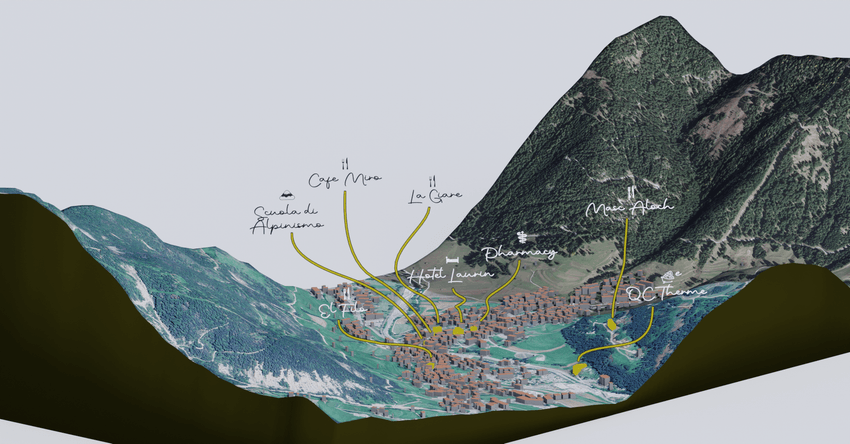
Now that I’ve painted a picture of Pozza — back to the climbing course planning. I’m the kind of person who likes to figure things out on my own, so the idea of signing up for a full-on alpine course initially felt a bit intimidating. My ideal scenario was having a friend take us up some easy climbs and casually walk us through the dos and don’ts of alpine trad climbing. The bad news? I don’t have friends like that. Yet. The good news? In a way, that’s exactly what we ended up getting!
One of the activities listed on the school’s website was a three-day introductory alpine climbing course. The description basically said they’d take you into the mountains and show you how not to die while climbing — pretty much exactly what I was looking for. I sent them an email outlining our skill level and a rough idea for the weekend. Almost immediately, I got a reply from Mary, who clearly runs the show for the alpines guides — and does it exceptionally well.
After a few more emails, it became clear that the course was meant for larger, less experienced groups. So instead, we decided to hire a guide for three days just for the two of us. For full transparency, a certified alpine guide typically costs between €300–€400 per day. For multi-pitch climbing, you’re limited to two clients per guide — unlike via ferratas, where groups can be larger. In climbing, one person can only safely belay two climbers at once, and honestly, trying to squeeze more people onto a belay ledge would get uncomfortable fast.


It’s not cheap, but when you think about it, you’re paying for an experience that could literally keep you alive in the mountains — and one you’ll build on for years to come. In the grand scheme of things, it was worth it. At least for us. We also ran into a few climbers who didn’t hire a guide but probably should have. They were halfway up a multi-pitch — on the crux, no less — and clearly in over their heads. Luckily, our guide stepped in to help, and we were very glad not to be those climbers that day.
Anyway, the last step was paying a one-third deposit. I was fine with that since their cancellation policy is pretty flexible, but it’s definitely something worth checking, given how much plans depend on the weather. After that, Mary passed our details to the guide, and all we could do was wait and hope the forecast stayed in our favor.
At this point, I was still a little overwhelmed. On one hand, I wanted to make the most out of our three days, but on the other, my main goal was for Daysi to have the best birthday possible. I started to worry that maybe I’d made things a little too intense. I’d never done a guided activity before, so I really didn’t know what to expect. Had I gone too far?
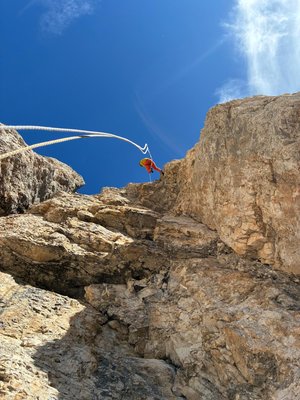
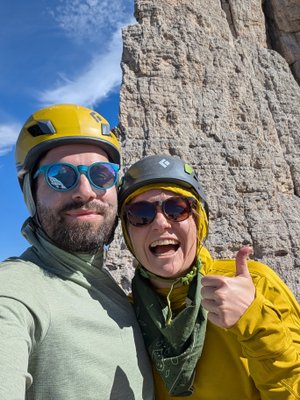
Turns out, I was worried for no reason. A couple of days before the weekend, our guide, Cesare, reached out to me on WhatsApp (If you’re not from Europe and planning a trip here, definitely download WhatsApp if you haven’t already — it makes communication so much easier.)
He started the chat by asking if we had any routes in mind. Panic. Of course I didn’t — that was the whole point of hiring a guide. I wanted someone to show me around. I told him we hadn’t picked any and were just hoping to do a few trad multi-pitch routes within our abilities. After that, all my worries disappeared. He replied with a list of options for all three days, complete with details. I looked them up in the guidebook and on the Crag website, and we agreed on a tentative plan.
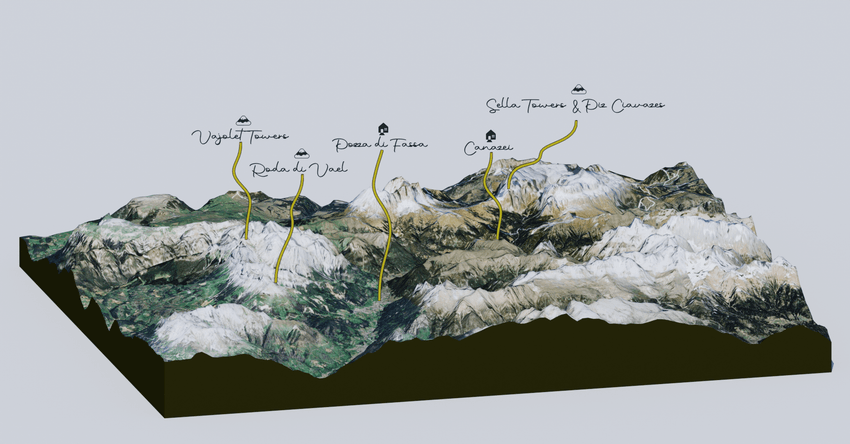
You can read about each of the days here:
- Day 1: Via Piccola Micheluzzi on Piz Ciavazes above Canazei
- Day 2: Via Fehrmann on Torre Stabler of the Vajolet Towers.
- Day 3: Via del Gracchio on Torre Edwards in the Roda di Vael area.

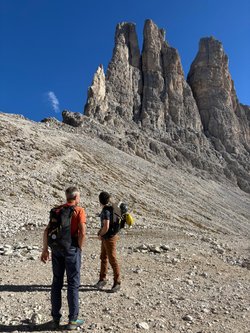
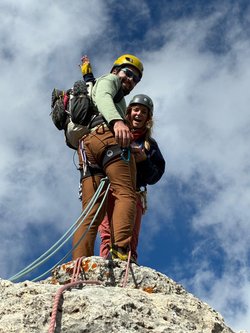
I’ll end the post with a couple of practical points about the logistics of multi-day guided climbing.
-
You’ll need to get yourself to your hotel, of course, but after that, assuming it’s in a convenient spot, your guide will usually offer to pick you up in the morning and drive you in their car. It’s much easier than trying to follow in your own — no need to worry about parking two cars, and let’s be honest, they’re far better at handling those narrow mountain roads than we’ll ever be. Plus, some mountain areas require special access permits that only guides have, so driving yourself isn’t always an option anyway.
-
The guides are there for the climbing and your safety, but they’re not your babysitters. They’ll show you around, and there are usually plenty of rifugios along the way for coffee and snacks. But at the end of the day, it’s up to you to make sure you’re prepared to spend a full day in the mountains — especially when it comes to water, food, and proper clothing.
-
From what we saw, the guides genuinely love the mountains and love climbing — it’s not just a job for them. So treat it like you’re out with a friend: chat, share stories, and make it enjoyable for everyone.
-
You don’t need to have all your own gear. You can, of course, use your own harness and shoes, but the guides provide everything else. They’ll bring the ropes and protection, and you’ll always be following — basically like top roping. All you really have to do is belay them while they lead. And honestly, the chances of you having to catch them taking a whip are close to zero.
-
Money matters can always feel a little awkward, but our experience was pretty smooth. Over the weekend, we’d occasionally cover coffee, beer, or lunch for the group — it was appreciated, but never expected. Sometimes Cesare even returned the gesture and paid for our coffee.
Tipping follows the same idea: appreciated but not required. You’re already paying a fair amount for guiding services. That said, Cesare was incredibly attentive to our safety and went above and beyond to make sure we had an amazing time, so we decided to tip him at the end.
Usually, you’ll pay the remaining course fee at the end — either in cash directly to your guide or via bank transfer. You can include your tip with the payment or, like we did, hand your guide an envelope with a note saying it’s a little extra just for them.
There’s no “right” amount to tip, but it helps to think of it in terms of a gesture: a coffee at a rifugio (€2), a couple of beers (€10), a nice lunch with coffee and cake (€20), or even a family dinner (€60). We ended up giving €100, which seemed on the higher side — but it felt right for the experience we had.
In the end, I think it all worked out just fine and we had a great time celebrating Daysi’s bday in the ‘pointies’. It’s going to be tough to top it next year.

Stay tuned, spaghettos, the next post is almost al dente!
